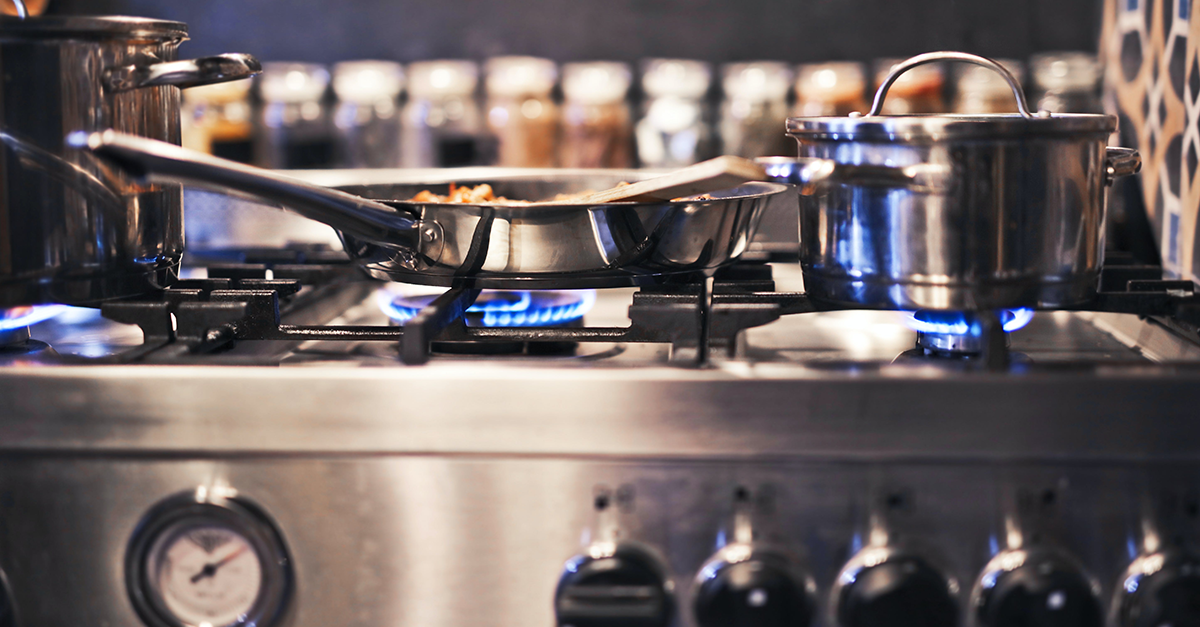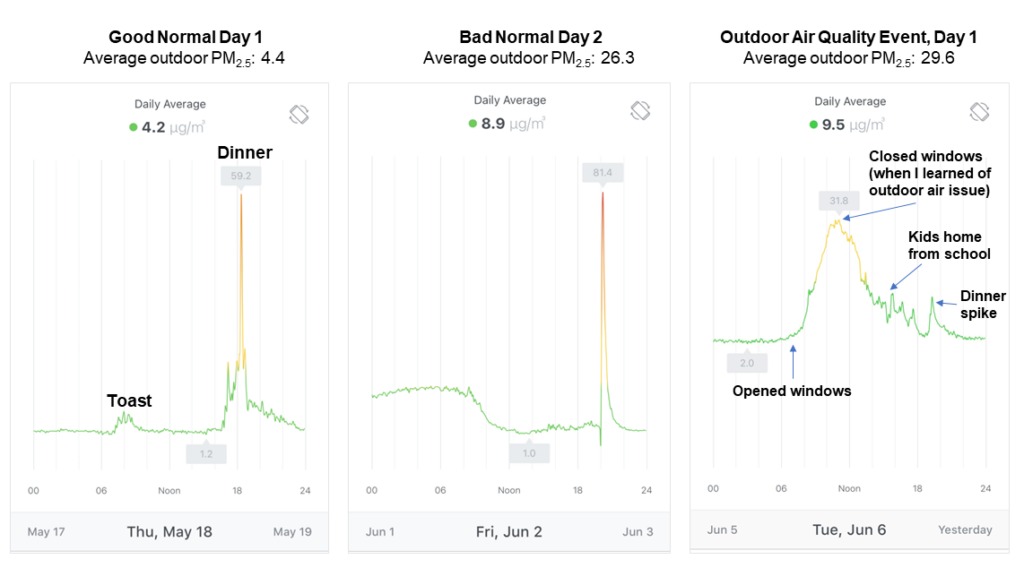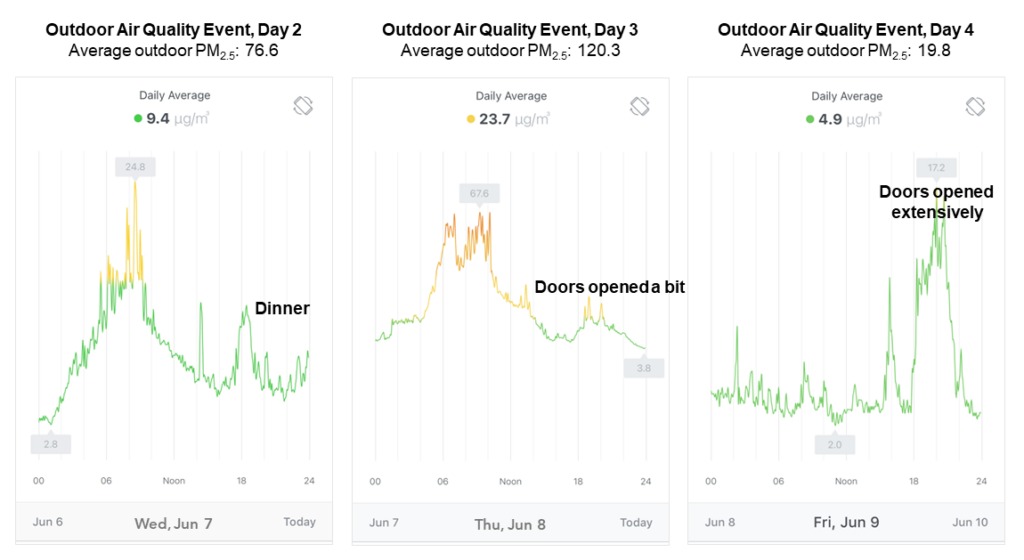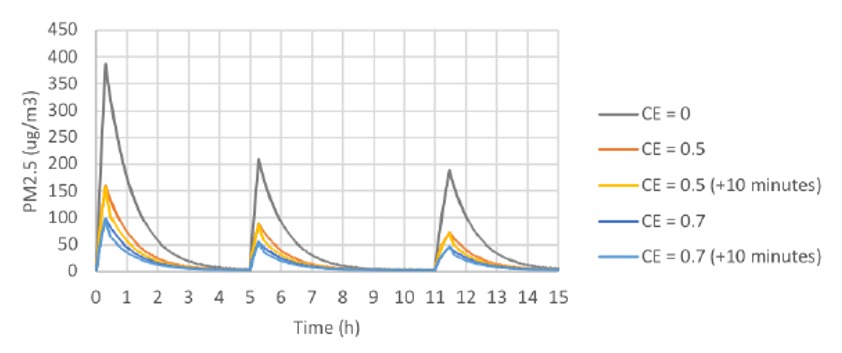

Blog
Cooking inside your home or apartment produces contaminants, and without an exhaust strategy, pollutants remain inside and diminish indoor air quality.

There’s more to a healthy meal than what’s on your plate. Cooking inside a home or apartment produces contaminants—those of primary concern are PM2.5 and nitrogen dioxide (NO2)—and without an exhaust strategy, these pollutants will remain inside and diminish indoor air quality.
In addition, one of the biggest news stories of 2023 was the Canadian wildfires. These events had many on the East Coast thinking about outdoor air quality and how to keep their indoor air as healthy as possible. The primary pollutant of concern from smoke is PM2.5.
There are numerous ways to keep polluted outdoor air outside, but what about the additional exposure to PM2.5 that can happen indoors?
Homeowners and renters can create a ventilation strategy to maintain safe levels of PM2.5 in their living space—whether there are outdoor air quality warnings or not. Keep reading to find out how.
First, it’s important to understand what PM2.5 particles are and how they impact our health. PM2.5 are tiny particles that are an EPA National Ambient Air Quality Standards (NAAQS) pollutant of concern:
“Exposure to inhalable particles can affect both your lungs and your heart. Small particles (less than 10 micrometers in diameter) can get deep into your lungs, and some may even get into your bloodstream. People with heart or lung diseases such as coronary artery disease, congestive heart failure, and asthma or chronic obstructive pulmonary disease (COPD); children; and older adults may be at greater risk from PM exposure.”
Studies have found adverse health effects to exposure levels of 24 hours or longer, which is why EPA has an action level based on average exposure over 24 hours.
Therefore, while reducing your exposure to 1-hour levels is advised, the primary focus is on reducing longer term exposure.
The California Energy Commission used a 24-hour average of 25 µg/m3 as their threshold when looking at exposure levels, which is based on World Health Organization (WHO) intermediate action levels.
The gist is that exposure to PM2.5 in the 25-35 range for up to 24 hours should be limited to a few times a year (or less), and that average daily exposure should be below 10. The lower the better.
Here is a case study that demonstrates how a robust strategy of filtering indoor air was effective at keeping indoor PM2.5 levels to less than 25% of the outdoor levels during the June 2023 wildfire event in Washington, DC.
Those living in homes and apartments that are effectively air-sealed had an easier time during the Canadian wildfires, because there were fewer gaps and cracks for polluted outdoor air to get inside.
But regardless, all homes and apartments needed to use MERV 13 or HEPA filters to get the PM2.5 out of their indoor air. If central air conditioners/heat pumps have a MERV 13 filter, that’s typically the best way to filter the air. Portable air purifiers do a good job on a room-by-room basis, too.
This same strategy of filtering indoor air can also keep PM2.5 levels down during more typical days. (See good and bad normal day images). However, you’ll notice that there is one everyday action that dramatically increases indoor PM2.5 levels: cooking.


Even in a kitchen with a range hood that exhausts directly to the outdoors and has been tested to function (many exhaust fans are installed improperly and don’t pull anywhere close to their rated air), PM2.5 levels spike when you’re cooking. However, the kitchen ventilation is effective at getting the PM2.5 levels back down to normal after about an hour or so.
DOE’s Lawrence Berkely National Lab (LBNL) did a simulation study of PM2.5 levels based on the type of and effectiveness of kitchen exhaust. They found that for a 900-square-foot apartment, average exposure to PM2.5 based on cooking three meals was 37 µg/m3 if there was no kitchen ventilation in the apartment.
With only a moderately effective kitchen range hood, the predicted 24-hour average PM2.5 concentration is reduced by half to 17 µg/m3. You’ll notice that it took about 3 hours for PM2.5 levels to reduce without ventilation, while ventilation brought the levels down to normal in about 2 hours. In the case study, indoor levels came down within 1 hour.

And of course, as we saw in the smoke case study in Washington, DC, using filters and/or air purifiers will substantially reduce this number as well. So, while kitchen ventilation is clearly helpful, for existing buildings that don’t have ducted kitchen ventilation, there’s likely an approach where most occupants can be protected from PM2.5 when sufficient air filtration is provided. This will be cheaper and more viable than putting in place a ducted kitchen ventilation strategy.
Gas ovens and ranges also produce combustion byproducts, including NO2, carbon monoxide, and benzene.
Scientific studies point to NO2 as the primary pollutant of concern when using gas for cooking. Unlike PM2.5, where exposure levels of 24 hours or greater are tracked, EPA has a 1-hour exposure limit to NO2 of 100ppb, not to be exceeded more than once a year.
The LBNL simulation study estimates that average 1-hour exposure levels for the 900-square-foot apartment would be 144 ppb when cooking a pasta dinner without a range hood. This same meal had a predicted NO2 concentration of 62 ppb when a moderately effective ducted range hood was used. (Read more about nitrogen dioxide’s impact on indoor air quality from the EPA.)
The point is that if a home or apartment uses gas for cooking, there must be an effective kitchen ventilation strategy in place in order protect occupants from the combustion pollutants.
For existing apartments that have gas cooking and no kitchen ventilation, it’s likely easier to replace the gas range with an electric option and provide a good MERV 13/HEPA filtration strategy than it is to add ducted kitchen ventilation. And the MERV 13/HEPA filtration strategy will serve double duty, protecting the occupants not just from PM2.5 from cooking, but also PM2.5 from polluted outdoor air.
In my own home with a gas range, here’s my cooking strategy:
Want to get in touch with SWA’s ventilation and indoor air quality experts? Contact us here.
Contributor: Andrea Foss, Sustainability Director at SWA
Steven Winter Associates